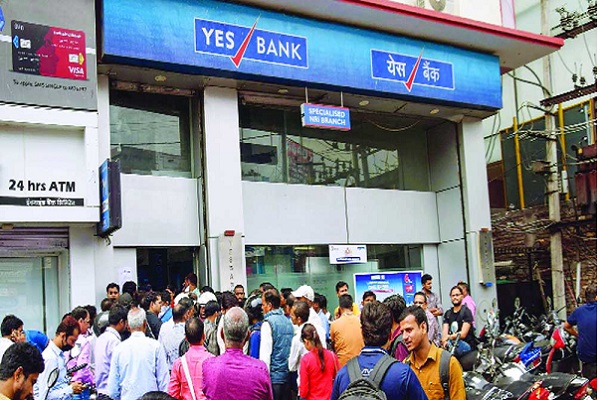AT1 instruments were envisaged as ones that would absorb losses at banks the way equity capital does. For investors, this was a high-yield security. The instrument had served the banks and their investors well until a few years back. Today, however, investors may not be as certain about its benefits.
AT1 is intended to be a perpetual bond, meaning that there will never be a redemption of principal, except when the issuer exercises a call. Because they are designed to absorb losses in the same manner as equity, they also pay higher coupon rates than bonds with longer tenures. And that is why the name Additional Tier 1 Capital (AT1) took hold.
AT1 Wipeouts
For eight years since its inception, the provisions of AT1 instruments remained untested. Then, in 2017, came the collapse of the Spanish lender Banco Popular. The regulator assessed that the bank’s capital ratio had fallen below the critical level. This, in turn, triggered a necessary condition of AT1 instruments that allows temporary or permanent cessation of coupon payments. The authorities exercised that discretion and wiped out the AT1 holders’ claims.
The next test came three years later. This time, it was at home. YES Bank’s AT1 holders’ claims were wiped out in March 2020. This followed the regulator’s assessment of the bank being in critical health and the need to absorb losses.
The third case was in 2022, involving Sberbank, the European subsidiary of the Russian bank. Its failure arose from restrictions and claims that resulted from the Russia-Ukraine war. AT1 holders’ claims were wiped out to meet solvency needs.
The fourth case was in 2023, with large losses being discovered at the global behemoth Credit Suisse. The Swiss regulator wiped out AT1 bond claims.
There are some striking similarities in these cases, the biggest being the complete rather than partial cancellation of AT1 claims.
Divergent Outcomes
The AT1 holders in the cases of Banco Popular and Sberbank did not contest the bank decisions and actions that were, in turn, backed by the regulators. The former was sold to Banco Santander. Both banks were sold to their new owners at zero value. With that, the AT1 holders ended up being treated at par with the equity holders. Investors in both cases lost their investments completely.
In the case of Credit Suisse, the bank was bought by its once arch-rival UBS at a consideration of around $200 billion. This provided the equity holders with some value, even as AT1 holders lost all their claims.
At this point, it needs to be understood that the terms of AT1 instruments are designed to do just that.
Basel regulations, and national regulations based on them in Belgium, Spain, Switzerland and India, have identical terms with respect to AT1 instruments.
The terms stipulate that:
- Coupon payments can be stopped temporarily or permanently when certain adverse conditions arise. The latter means a wipeout of the instrument from the issuing bank’s liability.
- The use of public money for the rescue of a bank. This is chief among adverse conditions.
- The bank’s capital adequacy is falling below the regulatory requirement.
The discretion on whether to impair AT1 claims partially or fully rests with the bank and the regulator, who, in turn, are expected to base their decisions on ground conditions. The sole exception is an automatic and compulsory wipeout if the capital adequacy of a bank falls to 5.125%, from the usual 10% plus requirement.
Glancing at the Indian case, one would find that the documentation provided for the issuance of AT1 contained the necessary enablement under the wipeout clauses. That meant one precondition was met.
The rescuing investor, SBI, was and is a state-owned institution. Therefore, there is substance to the argument that public money was being used for the rescue of Yes Bank. The status of the third precondition remains unclear. This was central to the Swiss ruling.
Legal Pushback
AT1 holders of Credit Suisse and YES Bank sought legal aid. The courts in both instances ruled against the AT1 wipeout, but for different reasons. The Swiss court questioned the decision of the AT1 wipeout itself and ruled against it. The Indian court felt that it would not enter the domain of questioning the decision because it “would not possess the necessary expertise to do so. This was a remarkably candid point in hindsight, given that the Swiss and London legal ecosystems are renowned for their skill, vintage and finesse in financial disputes. The Indian court instead relied on procedure, pronouncing that the decision-maker did not have the requisite authority.
The Swiss court ruled last month that the necessary condition for the AT1 wipeout was not met because Credit Suisse was adequately capitalised. In other words, if and when this matter comes up for appeal at the Swiss Supreme Court, the relevant Swiss authorities will need to enumerate the financial conditions at Credit Suisse at that time under which the AT1 wipeout was made.
Both legal cases are now pending trial before the respective Supreme Courts.
From another angle, Indian investors pleaded to SEBI that these instruments were complicated and were mis-sold to them, especially to individuals.
The SEBI adjudication found some substance in investors’ grievances and imposed penalties on the relevant parties. The SEBI order also remains pending before an appellate authority.
Key Learnings
A few fundamental questions arise.
Should AT1 be treated at par with equity, as was the case at Banco Popular and Sberbank? Or should it be treated below equity?
The regulations allow both.
Take a look at the risks in an AT1 versus a conventional vanilla bond: coupon payment is subject to the bank retaining its capital adequacy ratio above prescribed regulations; impairment of coupon flows can be temporary or permanent, partial or full; and no use of government funds is permitted to rescue a bank. A question mark also looms over whether the pricing of AT1 truly reflected the risk in it. Investors today might think it does not.
This makes AT1 akin to credit derivatives, making them like an option contract written by investors on the issuer bank’s financial health. Think of CDS. When a default occurs, CDS writers’ coupon inflows stop, and it has to provide the principal to the buyer. In AT1 cases so far, when the issuer’s health deteriorated, the AT1 holders’ coupon inflows stopped, and investors had to forgo the principal investment. Perhaps Basel needs to rethink the instrument and its articulation.
For YES Bank’s AT1 investors, the unresolved question is where exactly they stand in this capital hierarchy, and whether the Supreme Court will finally clarify that point.
AT1 sales in India halved in the year ended March 2024 from the previous year. The instrument’s future will depend on whether these questions receive clearer answers and investors regain confidence.
Until then, caveat emptor. The devil lies in the fine print.
.png)





